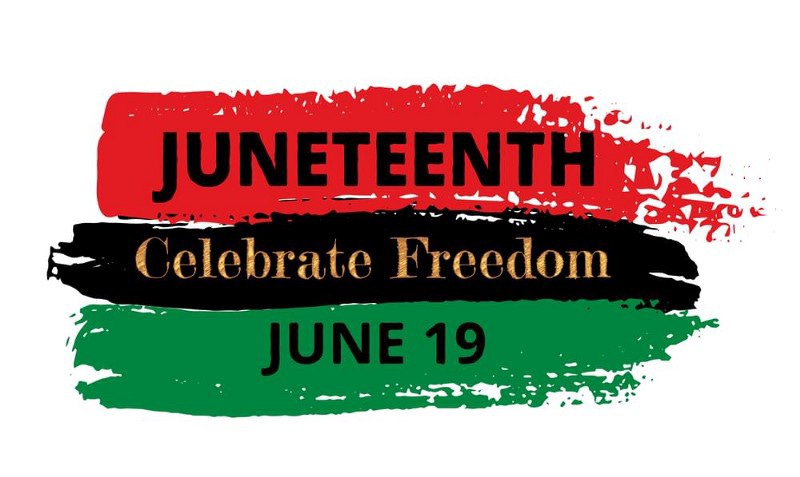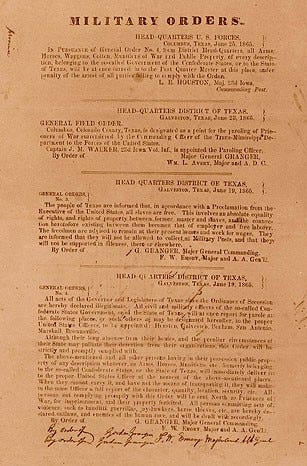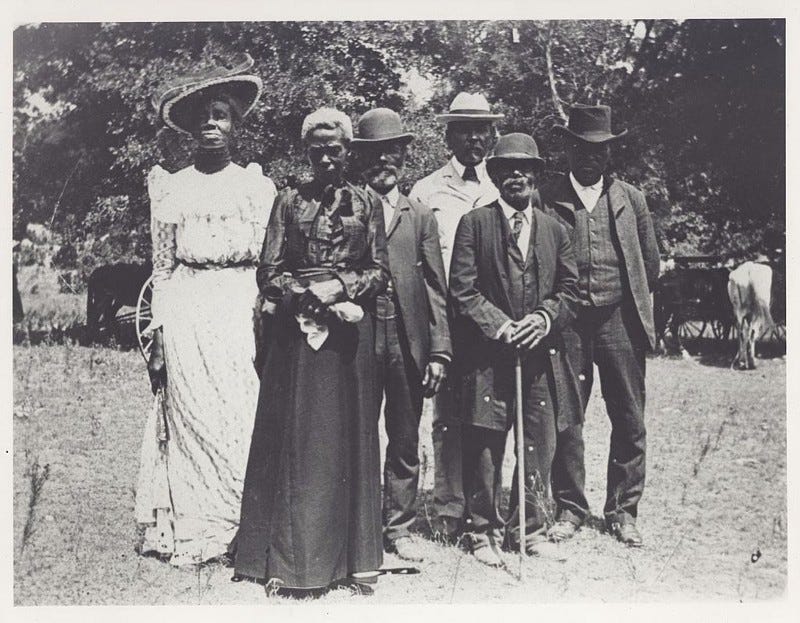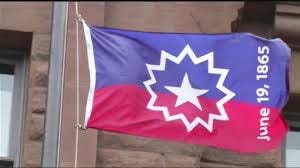What It Is and Why It Matters
This article has been revised and updated since the enactment of the new “Juneteenth Federal Holiday” that took effect on June 19, 2021.
The Long Road to Freeing the Slaves in the United States
Juneteenth is a holiday to commemorate the final emancipation of the enslaved people in the United States. The official celebration date is June 19, which is when the slaves were declared free in Texas, the westernmost slave state.
The Emancipation Proclamation was issued by President Abraham Lincoln on September 22, 1862, and took effect on January 1, 1863. Contrary to popular opinion, the Emancipation Proclamation did not free all of the slaves in the United States, only slaves in territories considered to be in “rebellion” against the Federal Government. It did not affect those slaves in border states that were fighting on the Union side, nor did it affect enslaved people in the southern states already under Union control.
As a believer in white supremacy, Abraham Lincoln at first viewed the goal of the “War Between the States” as a means to preserve the Union. However, as pressure from abolitionists mounted, Lincoln became more amenable to free some of the slaves. In addition, 200,000 freed slaves enlisted in the Army and Navy of the Union to help fight the war, as allowed by the new proclamation.
True and complete emancipation was only achieved by the passage of the 13th Amendment to the Constitution which was passed on December 18, 1865, however, with the Emancipation Proclamation, it was realized that the Civil War was primarily fought to end slavery.
Freeing the Slaves in Texas
Texas was the westernmost slave state and there were few Union soldiers stationed there, so enforcement of the Emancipation Proclamation of 1863 was slow and inconsistent. Two and one-half years after the Emancipation Proclamation took effect, Union General Gordon Granger arrived in Galveston, Texas, on June 19, 1865, and read aloud General Order №3, proclaiming that all enslaved persons in the state of Texas were now free.
It is VERY important to realize that both the slave owners and the slaves knew about the Emancipation Proclamation. Many slave owners moved to Texas (and brought their slaves with them) specifically to avoid freeing their slaves in other states where the Union army was in charge. It was only because the laws were enforced by the Union army that slaves were actually freed state by state until the Union general finally arrived in Texas to enforce the laws. The slave owners knew they had to free their slaves. The slaves knew they were freed. The slave owners only freed their slaves when forced to by the Union army, not because they were following the law.
Also written in General Order №3 was the provision that the freedmen were not to leave their homes nor show up at military installations for relief. They were supposed to stay where they were and accept their “new status” as paid labor. The newly freed slaves still were expected to follow the directions of their former owners and to not emancipate themselves or move away for better opportunities.
Juneteenth is celebrated as “Black Independence Day” only because the Union Army, which had won the Civil War, was enforcing the Emancipation Proclamation in all slave states, with Texas being the last state where the enforcement was needed and took place.
All slaves were not truly emancipated until the ratification of the 13th Amendment to the Constitution of the United States in December 1865.
Juneteenth Celebrations
The name “Juneteenth” is a blending of the two words “June” and “nineteenth.” The Civil War had ended more than two months prior when Confederate General Robert E. Lee surrendered the Confederate troops to Union General Ulysses S. Grant at the Appomattox Court House in Virginia on April 9, 1865. Fighting in Texas and other southern states continued until August 20, 1866.
The first Juneteenth celebrations were held in Texas starting in 1886, mostly at church-centered gatherings. Over the next several decades, Juneteenth celebrations spread across the South, but Juneteenth was still relatively unknown in other parts of the United States. Juneteenth is also known as “Freedom Day,” “Jubilee Day,” “Liberation Day,” and “Emancipation Day” in various parts of the country.
In 1872, Richard Allen, Richard Brock, Jack Yates, and Elias Dibble contributed $800.00 ($17,073 in 2013 U.S. dollars) to buy four acres of parkland that eventually became Emancipation Park. In 1918, the City of Houston received the park as a donation, and from 1922 through 1940, it was the only municipal park that allowed African Americans.
In the 1970s, celebrating Juneteenth was associated with the emerging celebrations of African American freedom and arts after the Civil Rights Movement. Slowly but surely, by the 21st century, Juneteenth was recognized and celebrated in most major American cities, and it is now recognized as a state holiday or special day of observance in forty-seven states. In 2020, in response to the rising Black Lives Matter movements, several companies are giving their employees a day off to celebrate Juneteenth. The Mascogos, descendants of Black Seminoles, of Coahuila, Mexico also celebrate Juneteenth.
Activists are campaigning to have Juneteenth celebrated as a national holiday, but many people feel that the United States has too many official holidays already. At the time of this writing, the governors of Virginia, New York, Michigan, and Pennsylvania have signed executive orders recognizing Juneteenth as an official paid holiday for state employees.
Today, Juneteenth celebrations often include lectures and exhibitions on African-American culture. The modern Juneteenth holiday places much emphasis on teaching about African-American heritage. Celebrations are commonly accompanied by voter registration efforts, the performing of plays, and retelling stories. The holiday is also a celebration of elements of African-American influences.
The Official Juneteenth Flag
The official Juneteenth Flag was designed by L.J. Graf. The colors red, white, and blue echo the American flag to symbolize that the enslaved people and their descendants were Americans. The star in the middle pays homage to Texas where General Order №3 was read, while the bursting “new star” on the “horizon” of the red and blue fields represents a new freedom and a new people. The date of June 19, 1865, was added to the official flag in 2007.
About My New Business
Since I officially retired in September 2020, I have started a new business with my husband as of May 2021. The TeamOwens313 Global Creative Community is a paid membership site that includes exclusive and valuable articles, research, podcast episodes, and networking opportunities not available anywhere else. You can start your monthly or annual membership with a 7-day free trial.
Stay updated on everything about me, my husband, and our personal and professional lives by joining our informational email list. You can sign up here.






